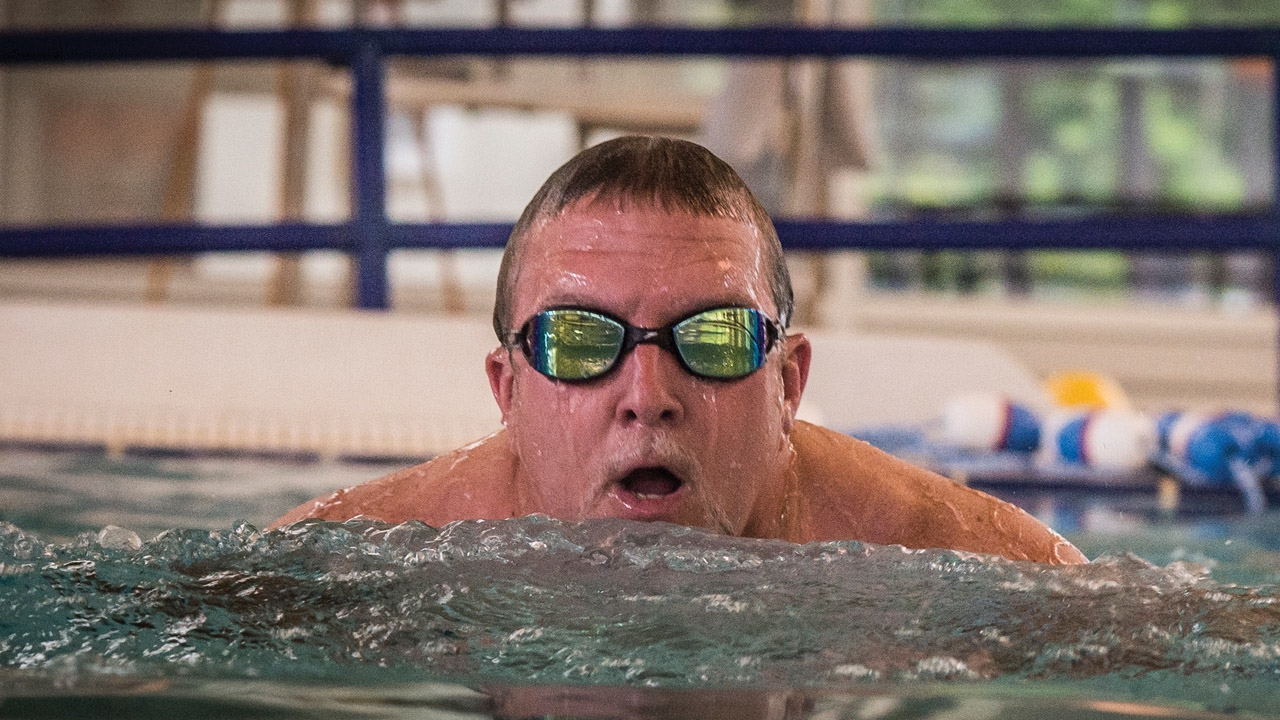That goes for everyone, from injured military veterans to visually impaired children, and people who have lost limbs to individuals with spinal cord injury, stroke, Parkinson’s disease, and other conditions.
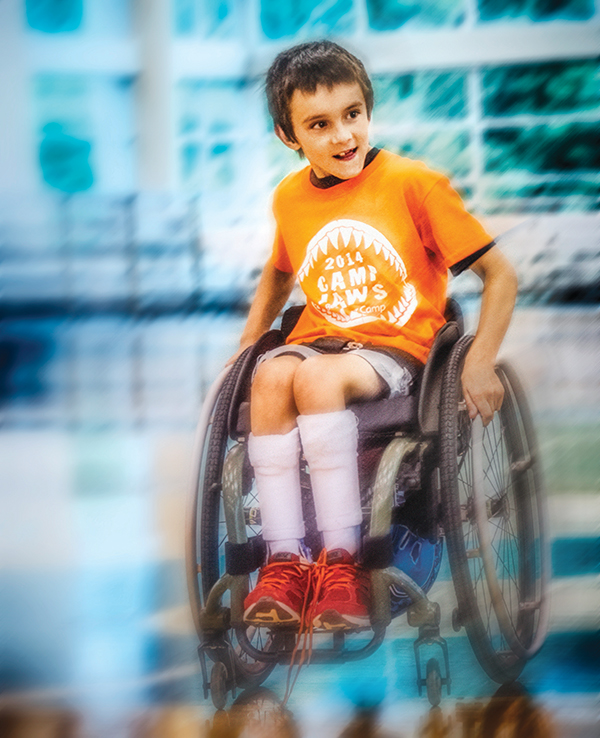
The UAB/Lakeshore Research Collaborative intends to change those attitudes toward exercise, along with the physical, social, and economic barriers that people with disability face in starting and sustaining fitness programs. The pairing brings together the scientists in UAB’s School of Health Professions with the adapted-fitness experts at Lakeshore, a nonprofit organization that has helped individuals with disability to improve physical fitness for 40 years. The combination of knowledge and resources is unlike anything else in the nation, Underwood says, and it has the potential to improve quality of life for people everywhere.
Motivation to Move
Physical activity isn’t marathons or bust, Underwood says. For some people, the fitness goals are fairly basic: Get up, and get moving. Others prefer to spend time in the Lakeshore pool or walk around their neighborhoods. The Lakeshore staff helps individuals develop fitness plans that can be used at home, outside, or at other facilities if they can’t travel to the recreation center on a regular basis. “The trick is to find the right exercise program,” Underwood says—one that is simultaneously manageable and enjoyable.
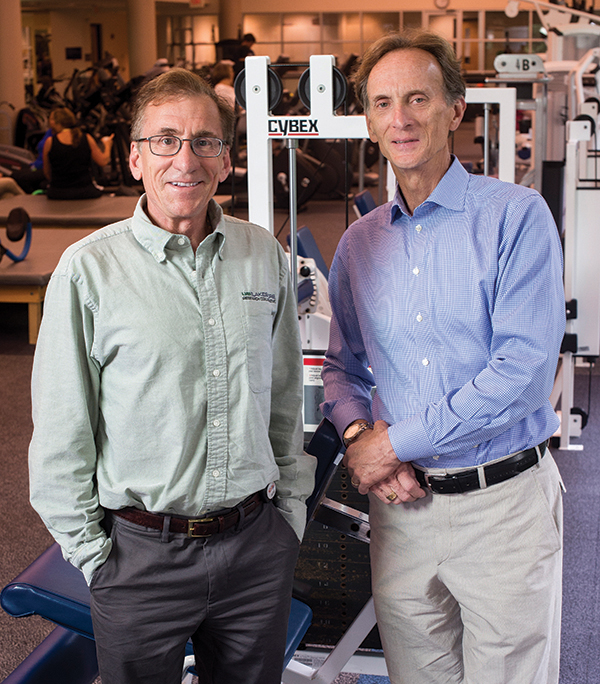 James Rimmer and Jeff Underwood
James Rimmer and Jeff UnderwoodPrescription for Fitness
Determining how much exercise is required to benefit individuals is one major project. Currently, Lakeshore and UAB are examining how certain types and “doses” of exercise could reduce the impact of secondary conditions. The question hasn’t yet been answered, Rimmer says, because it’s difficult to find enough people with disability in a specific area to enroll in a study. Lakeshore and UAB have a model to change that by asking all new Lakeshore members to participate in the study, as well as people in the community who are interested in learning more about their health.
Through the Rehabilitation Engineering Research Center on Exercise and Recreational Technologies and Exercise Physiology for People with Disabilities (RecTech), made possible by a $6-million grant from the National Institute of Disability and Rehabilitation Research, Rimmer and UAB researchers are adapting technologies to make physical activity more inclusive. Currently, they are helping to build Lakeshore’s telehealth capacity. Internet-linked video monitors would connect fitness trainers to individuals from underserved communities and those who can’t regularly travel to the facility, helping them to stay active and motivated.
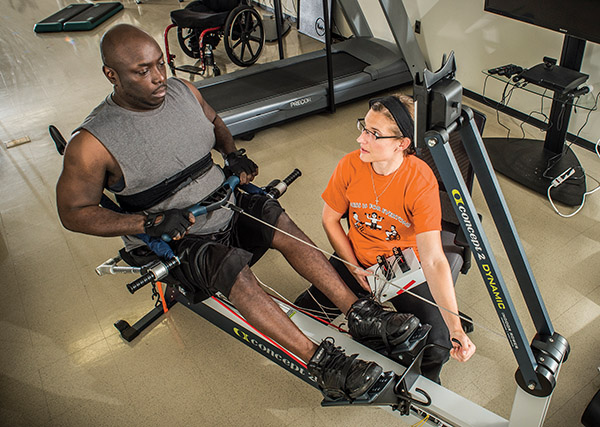 Susan Silverman, a UAB Ph.D. candidate in rehabilitation science, works with athlete Seneca Davis on a functional electrical stimulation rowing machine in Lakeshore Foundation's Exercise and Sport Science Lab. UAB biomedical engineering student Sean Pool helped design the machine.
Susan Silverman, a UAB Ph.D. candidate in rehabilitation science, works with athlete Seneca Davis on a functional electrical stimulation rowing machine in Lakeshore Foundation's Exercise and Sport Science Lab. UAB biomedical engineering student Sean Pool helped design the machine.
Strong Designs
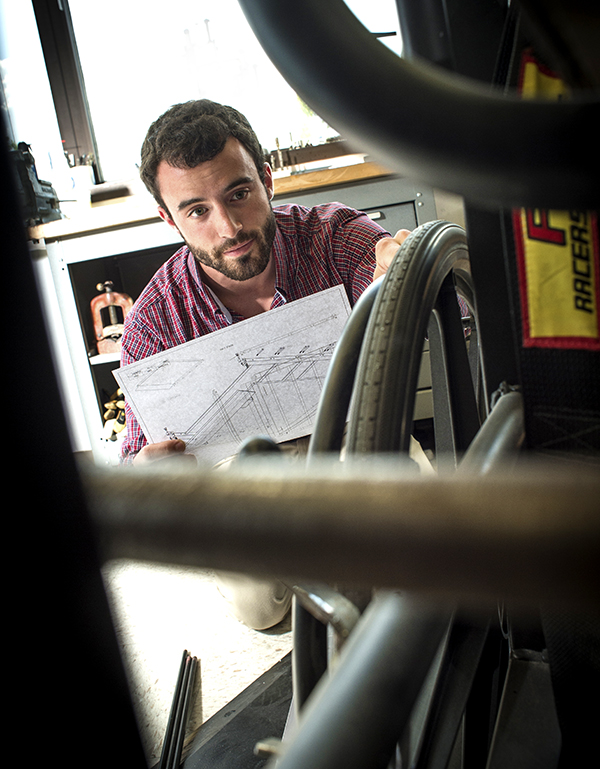 Recent graduate Brandon Sherrod reviews a student-designed prototype for an adapted device.
Recent graduate Brandon Sherrod reviews a student-designed prototype for an adapted device.“The goal is to combine engineering with rehabilitation and exercise medicine to improve outcomes for people with all kinds of disability, which include spinal cord injury, stroke, congenital conditions, and so on,” says Eberhardt, a RecTech collaborator. “For some people, coming up with a solution that lets them walk, stand, or even climb stairs is a major accomplishment.” Cost is another factor; Eberhardt notes that many people with disability say that devices currently on the market are too expensive and don’t work well.
Some of the student designs are prototypes created with one person specifically in mind. Other devices, however, have broader applications, bringing opportunities for commercialization and widespread use. Earlier this year, a UAB-designed wheelchair that toddlers can control with a joystick won the international student Da Vinci award, which recognizes innovation in assistive and adaptive technology. Another UAB finalist was an affordable home wheelchair scale that helps people monitor their weight; Lakeshore has already put it to use.
Eberhardt and his students also are collaborating with Rimmer on solutions to make working out more enjoyable, in turn increasing the chances that someone will continue exercising. Currently, they are tapping into Xbox Kinect technology with a goal of creating “exer-games” to help individuals with disability improve balance, strength, and cardiovascular endurance. Future projects include the development of interactive video “tours” for fitness machines, giving people a choice of virtual routes to walk, run, or cycle through as they exercise. “Some of these exercises get very boring, and no one wants to do it for very long,” Eberhardt says. “So we want to create scenarios where you feel like you’re moving down a trail, exploring the Grand Canyon, or visiting the Louvre.”
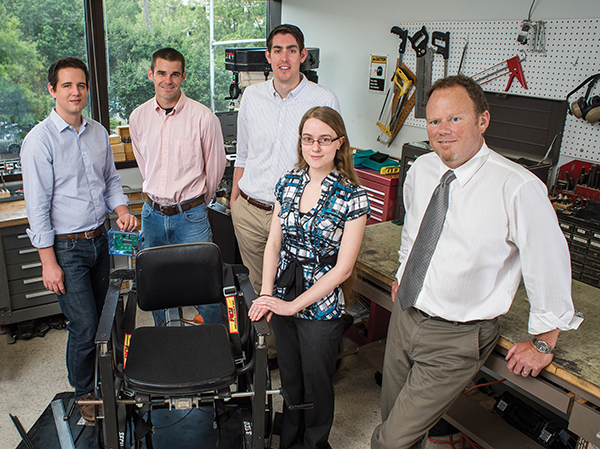 (Left to right) Biomedical engineering students Joe Schwertz, Doug Doud, Matt McCollum, and Emily Geiger-Willis, along with professor Alan Eberhardt, have developed a wheelchair scale, infant swing, motorized bed, and other equipment for people with disability.
(Left to right) Biomedical engineering students Joe Schwertz, Doug Doud, Matt McCollum, and Emily Geiger-Willis, along with professor Alan Eberhardt, have developed a wheelchair scale, infant swing, motorized bed, and other equipment for people with disability.
Exercise for All
• Learn more about the work of the UAB/Lakeshore Research Collaborative.
• Give something and change everything for research into fitness for people with disability.
